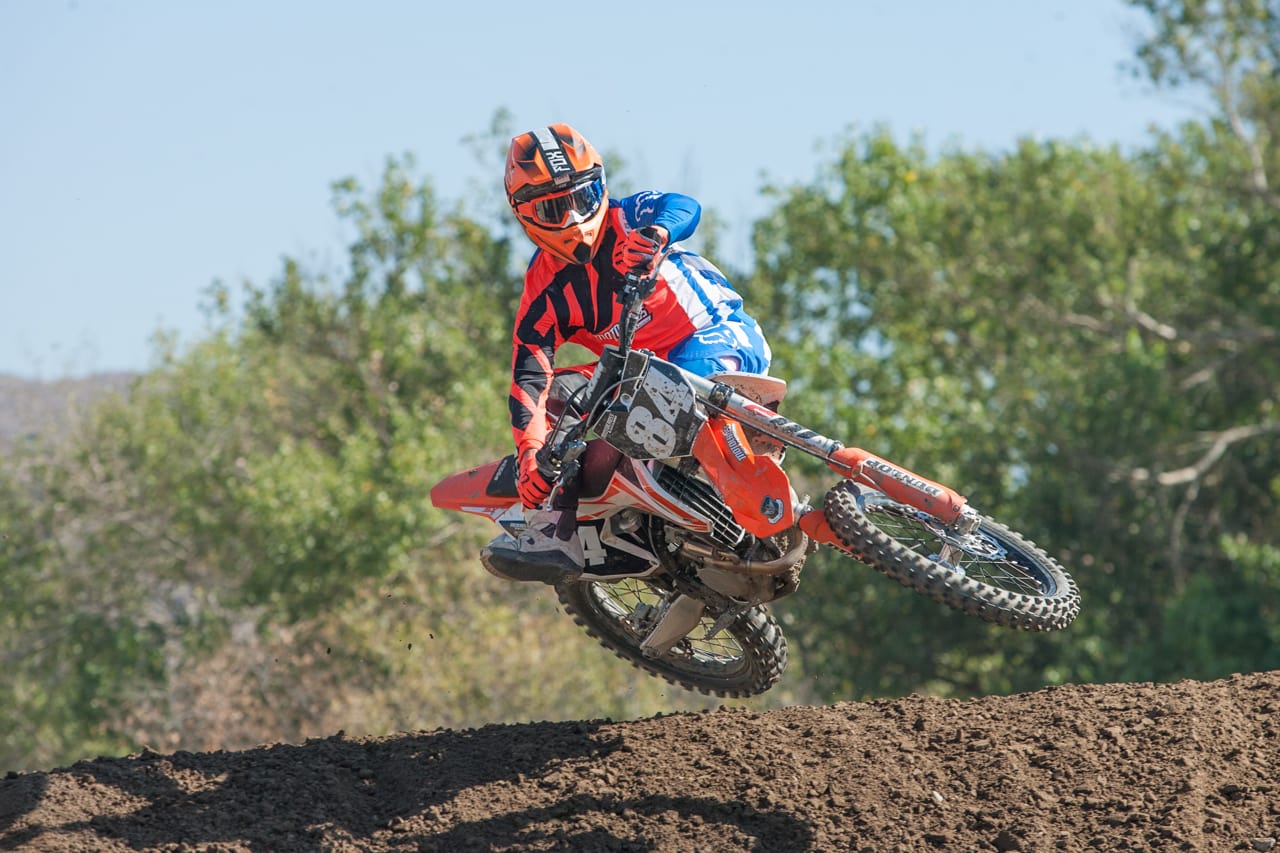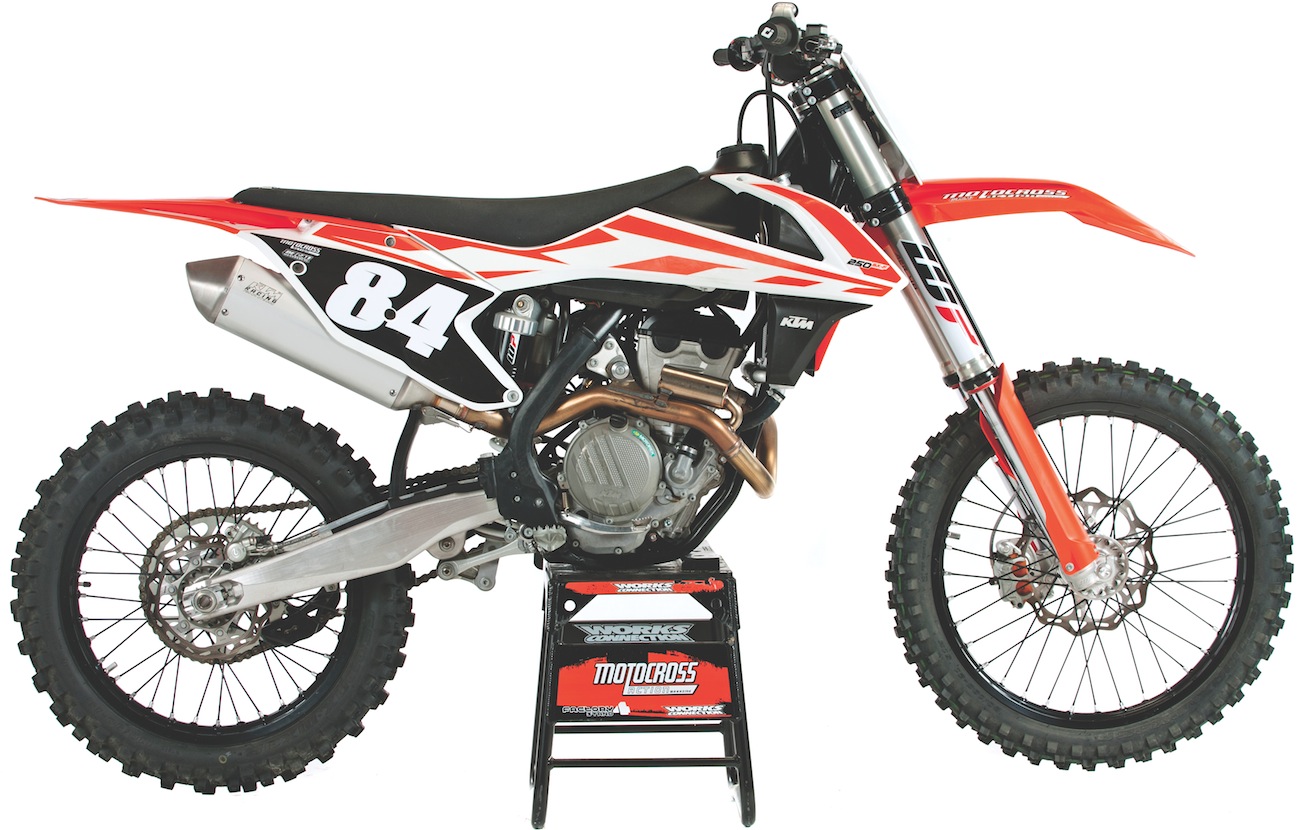ASK THE MXPERTS: MAKE YOUR KTM 250SXF SOFTER BY GOING STIFFER
 There is danger in making your bike softer to the point that it gets stiffer — in which case you have to make it stiffer to get it softer.
There is danger in making your bike softer to the point that it gets stiffer — in which case you have to make it stiffer to get it softer.
STIFFER IS SOFTER
Dear MXA,
I’m a beginner who has a 2017 KTM 250SXF. I’m not happy about my forks. The dealer set my air pressure to 125 psi, and I run the compression between 12 and 17 clicks out (depending on the track). After riding for a while, the forks start getting harder in the braking bumps, and I’m forced to bleed the air from both forks’ damping and air sides. I weigh 155 pounds. Could you give me some tips to fix my forks without spending money?
There are some holes in the information that you gave us. The stock air pressure on the WP AER air forks on a 2017 250SXF is 154 psi. MXA has test riders who weigh less than your 155 pounds, but they choose their air pressure after they do a couple of test runs to determine how much travel they are getting out of their forks. You never mentioned if your forks bottom or stay high in the stroke. You can check this by putting an O-ring or zip-tie around the right-side fork leg. With the zip-tie in place, go ride the bike at your normal pace. When you come back to the pits, look at how far the zip-tie has moved down the fork leg. While you don’t necessarily want it to be pushed all the way to the bottom, you also don’t want it to be 5 inches away from bottoming. Add or subtract air pressure until you get the zip-tie within 1-1/2 inches from the bottom of the leg. Why 1-1/2 inches? You need a little extra travel for when you case a jump or develop a sudden burst of talent. At 125 psi, which is a very low pressure setting, your forks are under a certain amount of stress. First, the ride height of the front of your bike will be very low, which means that the forks will dive excessively under braking and probably use up a lot of available travel whenever the front of the bike is loaded. This will make the forks feel harsh, especially in braking bumps. Second, when the forks don’t have enough air in them, they ride on the stiffest part of the damping curve. In essence, they drop through the plushest part of the fork’s travel and move down to where the fork’s compression damping is trying to stop them from bottoming.
At 125 psi, which is a very low pressure setting, your forks are under a certain amount of stress. First, the ride height of the front of your bike will be very low, which means that the forks will dive excessively under braking and probably use up a lot of available travel whenever the front of the bike is loaded. This will make the forks feel harsh, especially in braking bumps. Second, when the forks don’t have enough air in them, they ride on the stiffest part of the damping curve. In essence, they drop through the plushest part of the fork’s travel and move down to where the fork’s compression damping is trying to stop them from bottoming.
Most MXA test riders think that KTM’s recommended stock air pressures are at the top of the scale and that most riders should work down from there. How far down? Probably not as far as 125 psi. We’ve gone as low as 130 psi for 140-pound test riders, but we typically start testing at the OEM-recommended air pressure and then lower it in 2-psi increments until the forks don’t feel like they are dropping into their stroke (and the O-ring is getting the desired travel).
Our guess is that you don’t have enough air pressure in your forks. You mentioned that the dealer set your air pressure at 125 psi but didn’t say if you ever changed it. When you run pressures that are too low—and 125 psi is too low—thinking it will make your forks feel softer, it actually makes them feel stiffer. You need to increase the air pressure in your WP forks to get them to ride higher in their stroke to take advantage of the plusher valving at the top of the travel and to lessen the ramp-up effect of air pressure at the end of the stroke. You should invest in a zip-tie and start with 140 psi in your forks. Then, raise or lower the pressure in 2-psi increments until the zip-tie shows that you are getting almost full travel. Most beginners, once they find the proper air pressure, run the KTM 250SXF forks 20 clicks out on compression and 15 clicks out on rebound.




Comments are closed.